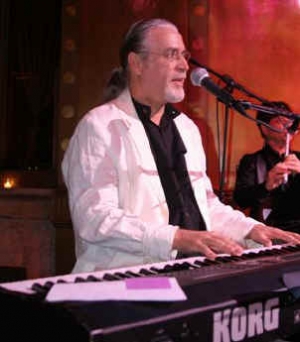Sukkot Pain and Gain
|
 |
|
| Shlomo Gronich in concert | |
by Judy Lash Balint
September 30, 2007
If you can't stand crowds and don't like walking, don't even think about coming to Jerusalem during Sukkot.
The city is packed, and all the streets leading to and from the Old City are closed to private vehicles, so the only way to get around is to pile onto the city buses along with the rest of world Jewry, or, hike through the crowds to get anywhere.
Tonight, with a lot of luck and a fair bit of knowledge of some of the back ways in and around the City of David, I managed to get in and out of a mass free concert in Jerusalem's most historic valley relatively easily.
In honor of the Sukkot festival, well-known Israeli composer and singer, Shlomo Gronich is the main act at the event that takes place in the newly restored performance area of the City of David. Thousands descend on the area just below the southern wall of the Old City, winding their way down dozens of steps past remnants of a Canaanite wall and in the direction of Hezekiah's tunnel and the Second Temple period Shiloah Pool.
The entrance to the City of David is down a steep slope outside the Dung Gate, the closest entryway to the Western Wall. I manage to hop onto one of the shuttle-buses running between the Karta Parking garage just outside Jaffa Gate and Dung Gate.The round-trip ticket cost 6 shekel ($1.50)and the bus deposits me 5 minutes walk away from the entrance to the City of David Visitor Center.
I join the throngs descending the stairs and find a spot on a ledge overlooking the stage. Streams of people of all ages follow;many families with small kids and grandmothers in tow; young couples shlepping strollers as well as a significant number of older people who carefully make their way down the steps.
On the eastern slope of the valley (the City of David is part of the Kidron Valley)the twinkling Ramadan lights of the Arab houses in Silwan shine through the night sky. Silwan of today is built on top of the remnants of the buildings of the first wave of Yemenite Jews who arrived in Israel in the 1860s. Those Jews fled during the Arab riots of the late 1920s-1930s and the Arab squatters took over.
As Gronich starts singing, Ramadan firecrackers go off, and an evidently urgent Arab nighttime construction project gets underway.
When most people are already situated, I see Davidele, one of the men responsible for the revitalization of the City of David, walk down to the stage accompanied by his wife and a bodyguard. There's a wide smile on the face of this diminutive man with the shock of black hair wearing a white knitted kipa. Fifteen years ago,before the development of the area into one of Israel's most important archaeological and cultural sites, it would have been hard to imagine thousands of people venturing at ight into this once dangerous and judenrein neighborhood.
I leave before the end of the concert,figuring it will be hard enough to hike back up all those stairs and then walk up the hill to the bus stop just west of the Dung Gate to catch the bus without the accompaniment of thousands of others. I stop at the rooftop overlook that looks out over the oldest Jewish cemetery in the world. The eerily beautiful Mount of Olives cemetery is bathed in moonlight and electrical illuminations.
It's my lucky evening, as I manage to squeeze myself on through the back door of the bus, where a friendly blue-shirted Egged inspector is obligingly taking tickets. I hop off back at the parking garage and walk the rest of the way home--running into old friends from London whom I haven't seen in almost 30 years.
I'll put up with the crowds and the walking to be part of a Sukkot experience that generations of Jews could only dream about.
|




